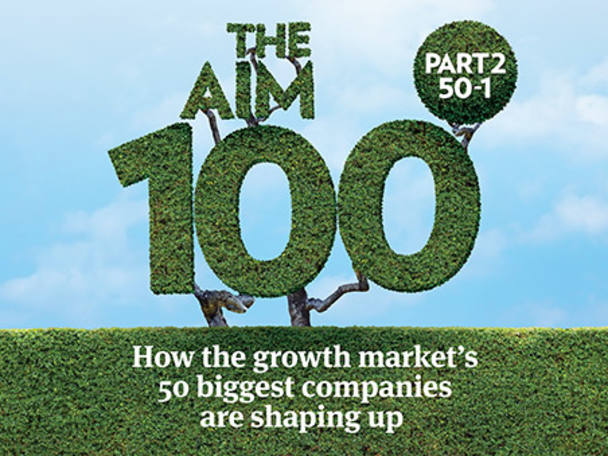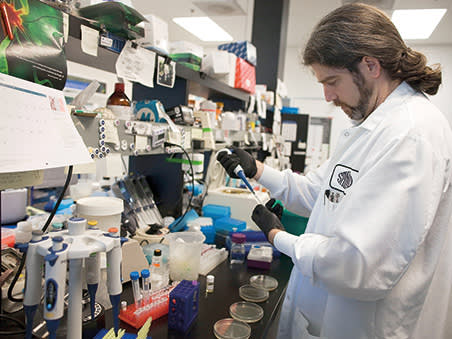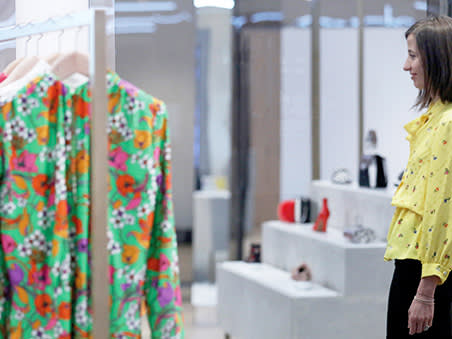10. Origin Enterprises
One of the more readily fathomable investment themes concerns the relationship between global agriculture and changing demographics. Origin Enterprises (OGN) is part of the growing segment within farming that could just as easily be characterised as part of the ‘knowledge economy’; a commercial offering based on “environmentally sustainable and profitable food production technologies for primary producers”.
Following on from a challenging 2016, the dual-listed Irish agri-services group recently reported good volume growth in the seasonally quiet first half of the financial year. More importantly, it has expanded its capabilities through deals to acquire UK-based digital agricultural services group Resterra for an initial consideration of £11.4m, along with Bunn Fertiliser for £14.2m. The former deal significantly enhanced Origin’s digital technology capabilities, highlighting its focus on a value-added approach, also reflected in a five-year collaborative research partnership with University College Dublin to build digitally-based agronomy advisory tools. However, even though the investment case is wholly explicable from a thematic angle, it is open to question due to painfully thin margins and erratic cash flows. Sell. MR
9. Clinigen
Clinigen’s (CLIN) commitment to making drugs available in as many countries as possible spurred it to acquiring Link Healthcare in the latter half of 2015. Last year, the acquisition – and that of Idis – helped Clinigen report its best-ever numbers, with notable expansion into Africa, Asia and Australasia. New chief executive Shaun Chilton – who took over from the group’s founder Peter George in late 2016 – has highlighted further geographical expansion as a priority for 2017. That’s why in December Clinigen teamed up with Japanese pharma group Eisai to provide South African women with access to breast cancer drug Halaven for the first time.
In contracts such as this, Clinigen does not actually make any money from the sale of medicines, as it gives them away free. Instead, revenue comes from fees paid by large pharmaceutical partners: a higher-margin source of income than traditional drug sales. So, while a move into this type of business is likely to hurt revenue in the full year, profit is set to benefit. Buy. MB
8. James Halstead
James Halstead (JHL) has consistently delivered stronger profit, so with the half-year figures to December 2016 it came as no surprise that operating profit nudged up to a record high. Sterling weakness has been a useful tool for the specialist flooring manufacturer because around two-thirds of its output is exported.
Trading in Australia, New Zealand and Canada all returned increased growth, although business in mainland Europe is relatively flat and lower in Scandinavia. On the other side of the coin, that weakness pushes up the cost of imported raw materials. Trading has been tougher in the UK, mainly as a result of destocking by a few customers. However, this is unlikely to feature again, and margins should start to improve in the second half. There are also a number of new product lines being introduced that have already attracted interest, and James Halstead is well placed to carry on delivering, although trading on 27 times forecast earnings makes the shares look expensive. Hold. JC
7. Breedon
One of the objectives that Breedon (BREE) laid out seven years ago was to consolidate the highly fragmented aggregates industry in the UK. And in this it has been very successful, taking its market capitalisation from £91m to £1.1bn.
The biggest acquisition was the £336m purchase of Hope Construction Materials in late 2015, and in the last seven years group profit has increased 10-fold. Much of this is down to the high level of operational gearing within the business model, and with infrastructure spending set to accelerate, Breedon is well placed to deliver some of the half a billion tonnes of aggregate reserves it owns. It also has a string of asphalt and ready-mixed concrete plants, and with operating margins within the English side of the business reaching nearly 20 per cent, this is up with the best in the sector. Margins in Scotland are lower at 12.5 per cent, reflecting much tougher trading conditions. At 80p, the shares are well up since our buy tip (52p, 10 September 2015), but still have plenty more to offer. Buy. JC
6. Abcam
Foreign-exchange rates are currently lending antibody supplier Abcam (ABC) a helping hand, but that doesn’t mean underlying trading hasn’t been good. Underlying sales growth of 11 per cent still outstripped the wider market rate of just 3-4 per cent for the six months ended December 2016. According to chief executive Alan Hirzel, that’s a result of the breadth of Abcam’s product portfolio as well as the convenience it can offer its customers in terms of delivery timeframes, although analysts also highlighted a more beneficial sales mix. For example, a 27 per cent rise in Rabmab sales – the group’s higher-margin rabbit monoclonal antibody – no doubt helped to widen underlying margins by 140 basis points.
What appeals most about companies such as Abcam is the phenomenal growth rates, without the risk typically attached to traditional drug discovery. Analyst upgrades have also helped fuel the share price upward this year, and we’re willing to bet the company can keep this current momentum going. Buy. HR
5. Fevertree Drinks
Everyone loves a G&T. By focusing on the ‘T’ rather than the ‘G’, Fevertree Drinks (FEVR) has delivered growth beyond the dreams of most corporate boards. Revenue grew from £21m in 2012 to £102m in 2016, and the bottom line looks even better. This growth earned the company a place in the Financial Times’ 1,000 fastest-growing European companies, quoted or unquoted.
Last year was branded “exceptional” by the company, somewhat acceptably, given the growth across geographies, flavours and formats. The company is a net exporter, but the UK is still a huge driver of growth, with turnover doubling in its most mature market.
The share price is a familiar story, now a multiple of the listing price. But as a result the valuation is prohibitive, with the stock changing hands at 63 times 2017 earnings, falling to 60 times in 2018. The price-to-sales ratio is in the double figures. It’s difficult to recommend entry at this price, and without income to help wash it down. Hold. IS
4. Burford Capital
Last year was transformational for Burford Capital (BUR). The group provides finance for companies or people that want to pursue a civil case but do not have the funds or capacity to do so. Income rose sharply to a record $163m thanks to a 60 per cent increase in realisations of investments made in litigation. Investment in cases has also increased markedly– almost tripling in the past two years – which bodes well for future income.
However, the real game-changer was the $160m acquisition of the largest private litigation investment company, Gerchen Keller Capital (GKC), at the end of last year. With GKC predominately focused on US litigation and gaining income from a mixture of performance and management fees from its four funds, this will diversify the company’s revenue stream.
The company also sold 10 per cent of its stake in the Petersen case by March for an aggregate $40m. This values its remaining stake at $360m, or more than three times its 2016 pre-tax profit.
The inherent uncertainty of the outcome of litigation adds complexity into the investment case. However, these recent developments bode well. At 789p, the shares trade at 15 times forward earnings, which seems inexpensive given the investments yet to be realised. Buy. EP
3. Boohoo.com
It’s interesting to see boohoo.com (BOO) slowly encroaching on its main rival Asos near the top of the Aim 100. The company has come a long way since its shocking profit warning just months after its IPO, with the share price up a massive 294 per cent in just 12 months.
It’s been busy on the acquisition front, too, snapping up majority stakes in rivals Pretty Little Thing and Nasty Gal to increase its share of the market. It should be said, however, that the former was owned by the son of Boohoo owner Mahmud Kamani. This, along with consistent upgrades to full-year guidance, has propelled the share price upward over the past year or so. Its forward thinking on currency hedges ahead of the EU referendum also went down well with investors.
The shares are still eye-wateringly expensive at 80 times forward earnings, but we prefer the look of current momentum here compared with Asos. Hold. HR
2. Hutchison China Meditech
Drug development is a long process and over the past few years Hutchison China Meditech’s (HCM) shareholders have had to be patient. 2017 is likely to be the year that the patience will be rewarded as, over the next few months, Chi-Med is set to announce results from its seven late-stage clinical trials.
In early March, the group got the ball rolling on the exciting period of data readouts when it completed its first successful pivotal drugs trial and became the first China-based biotech company to take a drug all the way from discovery to production. Fruquintinib – which has been developed alongside US pharma giant Eli Lilly – increased the chances of overall survival for colorectal cancer patients who had previously been treated with two rounds of chemotherapy. Chi-Med will now seek a new drug application in China, while Eli Lilly has the option to enter the drug into a pivotal trial in the US.
Next up is Savolitinib which is being developed in partnership with AstraZeneca. The drug, which broker Panmure Gordon thinks could generate over $2bn of sales, is being trialled in multiple cancer indications and a recent progress update was very encouraging. A pivotal trial into the drug’s efficacy in non-small-cell lung cancer is due to announce results by June and the group recently initiated another final trial in kidney cancer. Last August, off the back of excellent trial data, Chi-Med negotiated a 5 percentage point increase on the worldwide royalty earned on sales, in exchange for an extra $50m development contribution over the next three years.
Meanwhile, the group’s commercial arm, which sells drugs in China, is operating well and providing substantial cash flow to fund the group’s research and development activities. In the year to December 2016 the division reported a 43 per cent increase in revenue to $181m thanks to expansion of its prescription drugs service and strong demand for coronary heart disease drug Seroquel.
More income is coming from the group’s joint ventures – which added $66m to the bottom line last year – and property ownership in Shanghai. Cash and short-term investments of $104m, on top of the $70m unutilised banking facility leaves Chi-Med in a stable financial position, which gives it substantial firepower to deliver on its development goals. The risky nature of drug development does create a concern, but we think Chi-Med is well placed for long-term growth. Buy. MB
1. Asos
It isn’t long since fast-fashion etailer Asos (ASC) reported results, but readers of that piece will know we chose to downgrade our buy rating. It’s not unusual to see Asos’s shares dip on results day – many investors like to bank profits at certain stages – but we saw the recent fall as indicative of some challenges the group faces in the near term.
First, the group is tackling allegations over working conditions at its Barnsley warehouse, something that was brought to light by a BuzzFeed News investigation at the end of last year. The investigation alleged that workers were under significant pressure to meet targets that discouraged them from taking adequate toilet or water breaks, a portrayal that company bosses have rejected. Since then, chief executive Nick Beighton has himself undertaken an eight-hour shift, reporting that the conditions were “great” and that investments would continue to be made in order to improve employee satisfaction. One such initiative includes a new fitness and health facility.
Back to trading, and the group has some issues to tackle at home. Foreign-exchange rates – specifically the weakening of the pound against the US dollar and other global currencies – are working for and against Asos. They have allowed for lower prices overseas – which has substantially driven up volumes in territories such as Australia and Russia – but prices are being kept flat in the UK in order to recover higher costs and keep margins up as much as possible. With the UK business still accounting for a large chunk of gross profit, Asos can’t market itself as an online exporter just yet. Pricing is incredibly important to a value-based product company such as Asos and gross margins are already under pressure as the group tries to keep up with an increasingly competitive marketplace.
International expansion is Asos’s big growth opportunity, however, and the group is pressing on with its overseas plans. These include new distribution centres on the continent to fulfil European orders and a potential warehouse of its own in the US, although a specific location has yet to be set in stone. Valued like a technology stock, the shares trade north of 70 times forward earnings. While we’ve enjoyed the recent momentum play we’ve had on Asos, it’s time to take a step back to see how the group copes with a changing UK market. Hold. HR
For our complete run down from 50-1 see below:
And for 100-51:












